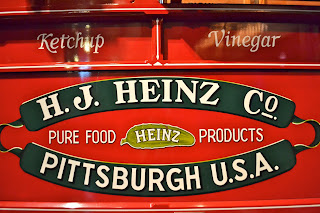Buffalo on the Ceiling, Pancakes on the Floor
 And now...FINALLY....the first in series focusing on some of the wonderful (and slightly different) food experiences I had while travelling in Nepal.
And now...FINALLY....the first in series focusing on some of the wonderful (and slightly different) food experiences I had while travelling in Nepal.Nepal has a rich culinary identity, shaped by its proximity to India and Tibet, a temperate climate, and fertile soil in the Kathmandu Valley. While it shares some similarities to other South Asian cultures (rice as a staple, liberal use of curry), it nonetheless has dishes that are unique to the region. There is also a subset of Nepali culture in the Kathmandu Valley, the Newars. The Newars are the indigenous people of the Valley, and have their own language (Newari) as well a culinary tradition distinct from Nepal as a whole.
My friend, tour guide, translator, and all around awesome host for my trip, KLB, had heard that there was a "secret" local restaurant near her house, and it served authentic, real-deal Newar food. While on one of our shopping excursions, she asked around and we discovered that it was just around the corner from where we perusing jewelry. We finally found Honacha located just behind the Krisha Temple in Patan Durbar Square, tucked at the end of an alley and a literal hole in the wall:
 ...and holy hell, I just did a quick internet search and they have a Facebook page.
...and holy hell, I just did a quick internet search and they have a Facebook page.Anyway....upon entering a low doorway, you may initially think that you've wandered into someone's private kitchen, except that there are groups of people clustered around rickety tables and a Pepsi cooler in one corner. The walls are covered in soot and the sink is a faucet in the corner. On the floor to the left of the entrance, two women sit surrounded by pots, bowls, and hot griddles. Immediately noticeable is the meat hanging from the ceiling:
 (Sorry that guy is in the way.) One of the staples of the Newari diet (aside from rice in many forms...more on that in in minute), is buffalo. The buffalo hanging from the ceiling is the begining of what is called sukuti. It's meat that is dried, then stir-fried and chopped up with spices, onions, garlic, and tomatoes. It's heavenly:
(Sorry that guy is in the way.) One of the staples of the Newari diet (aside from rice in many forms...more on that in in minute), is buffalo. The buffalo hanging from the ceiling is the begining of what is called sukuti. It's meat that is dried, then stir-fried and chopped up with spices, onions, garlic, and tomatoes. It's heavenly:We didn't have any sukuti at Honacha (that's some from one of the hotels where we stayed), but did enjoy another amazing buffalo dish, choila. Choila is buffalo that is marinated in spices, flame-grilled, the tossed with green onions, red chilies, and oil. It's typically severed room temperature, and is (along with sukuti) considered not so much a meal, but an appetizer.
Bara (or woh), is a lentil pancake, pressed and flattened on a griddle, and can be served with a fried egg cooked on top of it. That's a bara being shaped in the image below.
 Aloo sandeko is a dish of very spicy curried potatoes...the potatoes were melt-in-your-mouth tender, and like the choila, they were the kind of spicy that hurt so bad, but tasted so good. You couldn't help but to keep shoveling them in your mouth.
Aloo sandeko is a dish of very spicy curried potatoes...the potatoes were melt-in-your-mouth tender, and like the choila, they were the kind of spicy that hurt so bad, but tasted so good. You couldn't help but to keep shoveling them in your mouth. Finally, the rice component of our lunch was the chiura, or beaten rice. It is one of many styles of rice (puffed and steamed also being popular) and is made by soaking rice, then pounding it with a mallet, resulting in something akin to dry oatmeal in size and texture. It is mixed with the choila or aloo sandeko to help cut the spiciness of the dishes. It's very filling and is an important ingredient due to its ease of transportation and its ability to be used for a variety of dishes (re-hydrated in milk or water, it becomes somewhat porridge-like).
Needless to say, it was a fantastic meal (for us...for most Nepalis or Newars, it would have been a mere snack--these are a people that love to eat), and we washed it down with some Pepsi made with real sugar (another great aspect of international travel.) Interestingly enough, when we returned home and were reading the paper that evening, we saw that the food section did a feature on great local restaurants and Honacha was listed as one of the best and most enduring in the Valley. Amazing, considering that we walked right past it when we were first trying to find it!
Up next: A Newar Buddhist community feast for five thousand...




Comments
I always wanted to know about Nepal's food styles. Thanks for share it and keep up with this useful blog.